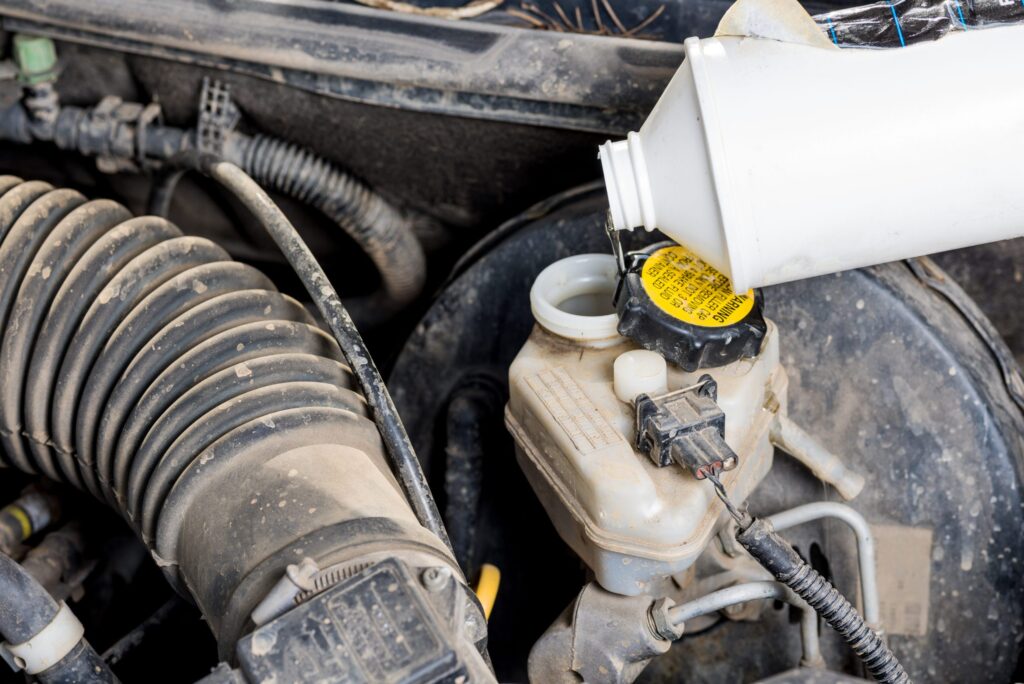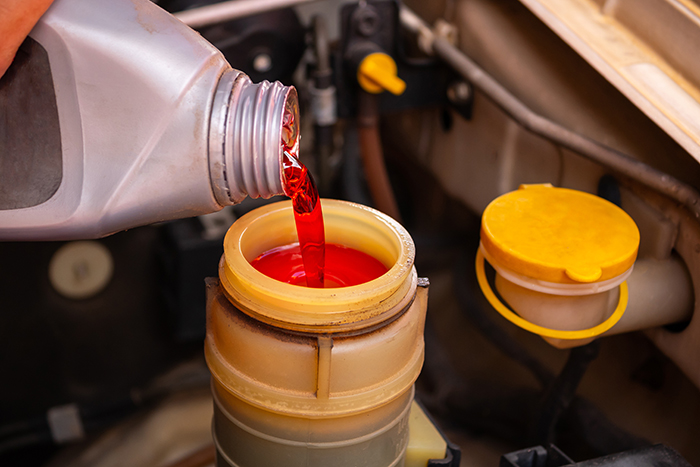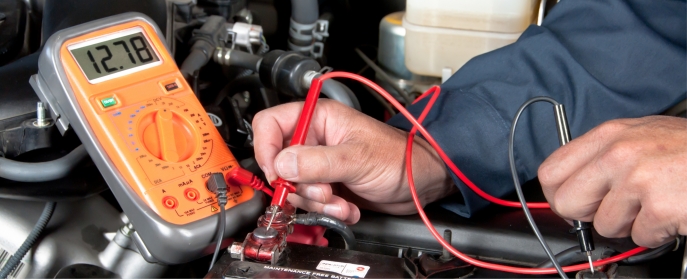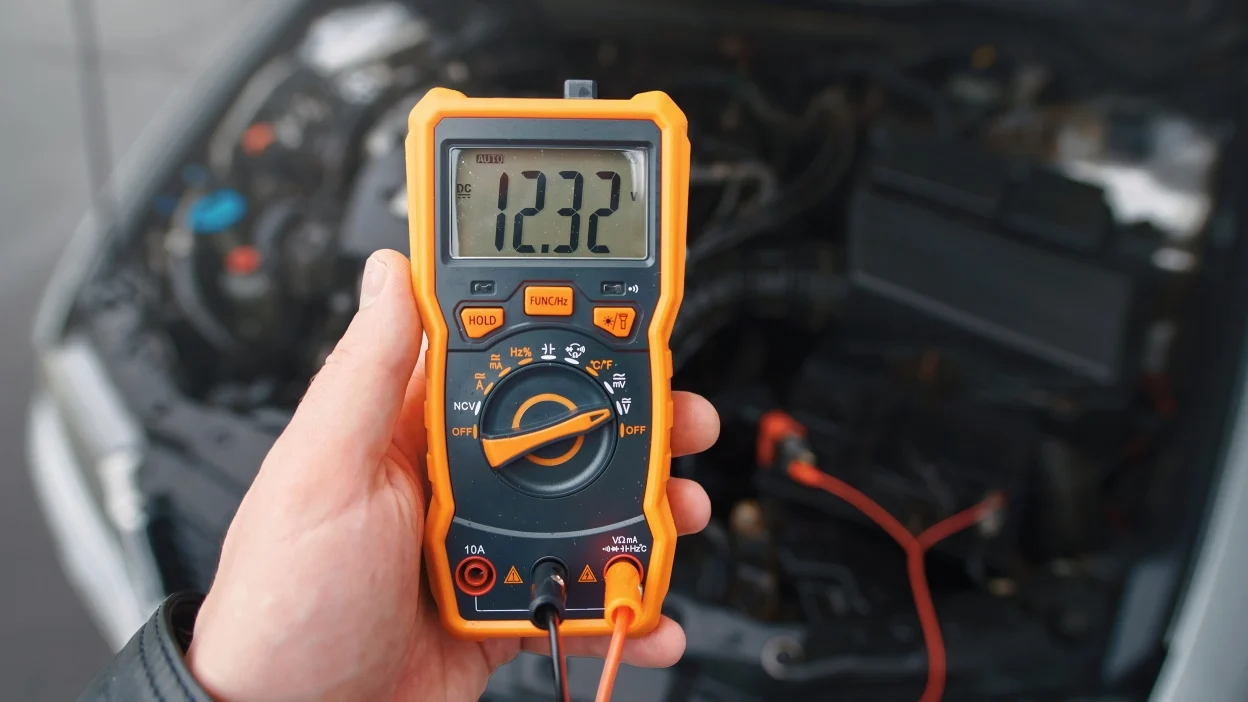Regularly checking your brake fluid is essential to maintaining a safe and efficient braking system. In this guide, we’ll walk you through how to check brake fluid, why it’s crucial, and what signs to look for to know when it needs attention. Let’s get started.
Table of Contents
Why Checking Brake Fluid Is Important
Your vehicle’s brake fluid is a vital component of the hydraulic braking system. Without it, your brakes can’t function properly, putting your safety at risk. Knowing how to check brake fluid not only helps prevent issues but also extends the lifespan of your braking components. Neglecting to check brake fluid can lead to corrosion in the brake lines, reduced stopping power, and even complete brake failure in extreme cases.
When to Check Your Brake Fluid
Experts recommend checking brake fluid every six months or whenever you change the oil. However, you may need to check it more frequently if:
- The brakes feel spongy or less responsive.
- You hear unusual noises when braking.
- Your vehicle displays a warning light.
Tools You’ll Need to Check Brake Fluid
To learn how to check brake fluid, you don’t need much. Here’s a quick list:
- Clean cloth
- Flashlight (optional)
- Brake fluid, if topping off is needed
- Gloves for safety
Step-by-Step Guide on How to Check Brake Fluid
Step 1: Locate the Brake Fluid Reservoir
First, park on a flat surface and turn off your car. Open the hood and locate the brake fluid reservoir. Typically, it’s found near the back of the engine bay, on the driver’s side.
Step 2: Inspect the Fluid Level
Look at the reservoir’s sides to see the “minimum” and “maximum” lines. How to check brake fluid levels: The fluid should fall between these two lines. If it’s below the minimum, it’s time to add more brake fluid.
Step 3: Check the Fluid Color
Brake fluid should be transparent or light brown. If it appears dark or has particles, it’s a sign the fluid needs replacing, as it may be contaminated.
Step 4: Refill Brake Fluid if Necessary
If the fluid level is below the minimum mark, carefully add brake fluid until it reaches the maximum line. Be cautious to use the correct type for your vehicle, as specified in the owner’s manual.
How Often Should You Replace Brake Fluid?
Knowing how to check brake fluid is just the start; understanding when to replace it is equally important. Generally, brake fluid should be replaced every two years or 20,000-30,000 miles. However, factors like driving conditions and vehicle age can impact this. Driving in humid or hilly areas may require more frequent changes, as moisture can accumulate in the brake fluid, impacting its effectiveness.
Common Signs Your Brake Fluid Needs Attention
If you’re unsure about how to check brake fluid, look out for these signs:
- A mushy brake pedal
- Unusual brake noise
- Lower braking performance
- A warning light on your dashboard
If you notice any of these symptoms, checking and potentially replacing your brake fluid can help restore brake function and safety. Maintaining a healthy brake fluid level is essential for the longevity of your vehicle’s braking system.

FAQ: How to Check Brake Fluid and Other Common Questions
Q: Can I check brake fluid by myself? A: Yes, following the steps above makes it simple to check brake fluid yourself. Just remember to wear gloves and handle brake fluid with care.
Q: What happens if I don’t check my brake fluid? A: Ignoring brake fluid maintenance can lead to brake failure, costly repairs, and reduced safety on the road.
Final Thoughts on How to Check Brake Fluid
Learning how to check brake fluid is one of the simplest, most effective ways to maintain your vehicle’s brakes. Regular checks ensure your brake system is operating smoothly, giving you peace of mind on every drive. Take five minutes every few months to check it and you’ll help keep yourself and your passengers safe and prolong the life of your brakes.
Related Post:
If you’re maintaining your car, you might also like How to Tell If Your Engine is Burning Oil to keep your vehicle’s electrical components in top shape.





Leave a Reply